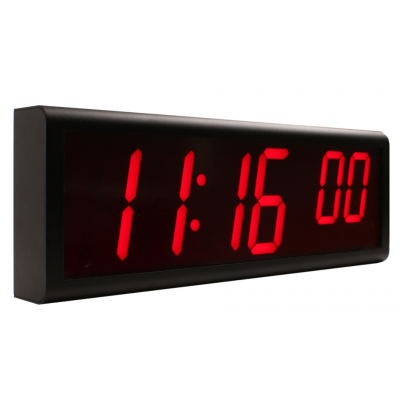Hospitals are large organisations. Hundreds of different health professionals work in the average hospital, and part of the good running and ability to provide care is to ensure good coordination.
Because health care is based on multi-disciplinary teams, treatments, meetings, operations and procedures often require strict coordination to prevent wasting time and provide an efficient service.
Making sure everybody has access to a synchronised and accurate time is part of this process, which is what makes precise and reliable digital wall clocks for hospitals so important.
Normal electronic wall clocks have a major weakness for use in organisations such as a hospital. Modern quartz clocks may appear accurate, but they are prone to drift, often by several seconds a day.
Over time, clocks can become several minutes out of synchronisation with each other, which means in a large organisation such as a hospital, different health professionals working in different areas can be working to wholly different times.
This can lead to people arriving for meetings and treatment procedures at different times, leading to an inefficient service
Accuracy
Accuracy is essential for digital wall clocks for hospitals.
It is completely impractical to expect somebody to continually check all wall clocks around a hospital and keep resetting them to the correct time, which would be a full-time job that would be virtually impossible to accomplish as the clocks first checked would soon be out of sync by the time the rest of them are adjusted.
For this reason, digital wall clocks for hospitals require a form of automatic synchronisation. Furthermore, they also need to be as accurate as possible and the most accurate source a digital wall clock can get its time from is atomic clock source.
Atomic clock time
Atomic clocks are so precise that they won’t drift by as much as a second in a hundred thousand years.
While atomic clocks are large, impractical devices used mainly in research and physics laboratories, it is possible to utilise the time told by an atomic clock for synchronisation of digital wall clocks for hospitals.
Atomic clock time is used to govern the world’s global timescale UTC (Coordinated Universal Time) and this time can be used by digital wall clocks for hospitals to provide an accurate and source of time for synchronisation.
Digital wall clocks for hospitals
There are several different choices for a digital wall clock for a hospital that receives an atomic clock time source and automatically keeps synchronised. The first is to use independent radio receiver clocks.
These clocks receive the MSF transmission (or WWVB in the USA) broadcast by the National Physical Laboratory (NPL). The clocks automatically adjust themselves and maintain millisecond accuracy of the atomic clock time signal.
The practical option for digital wall clocks for hospitals is to connect the clocks on an Ethernet network and use an NTP time server that either receives the atomic clock radio signal or utilises GPS as its time source.
These Ethernet clocks will synchronise and maintain the accuracy of all the digital wall clocks for hospitals on the network, ensuring that no matter where anybody is or in which department of a large hospital, they will have access to synchronised clock that is telling the exact same time as every other clock around the hospital.

